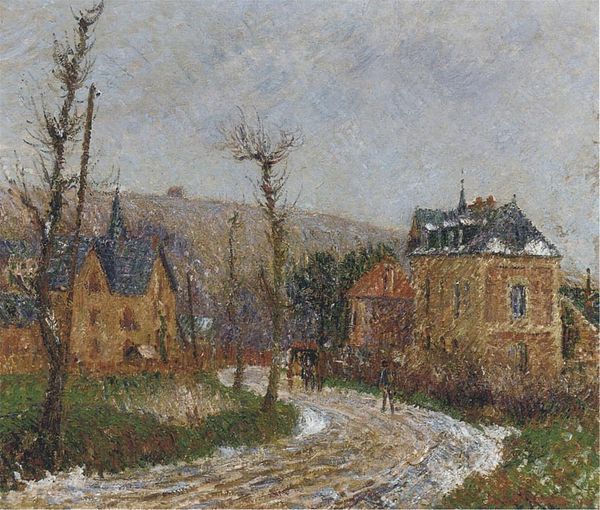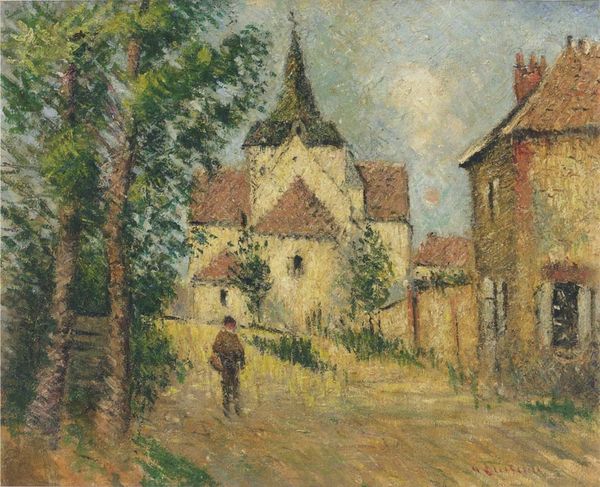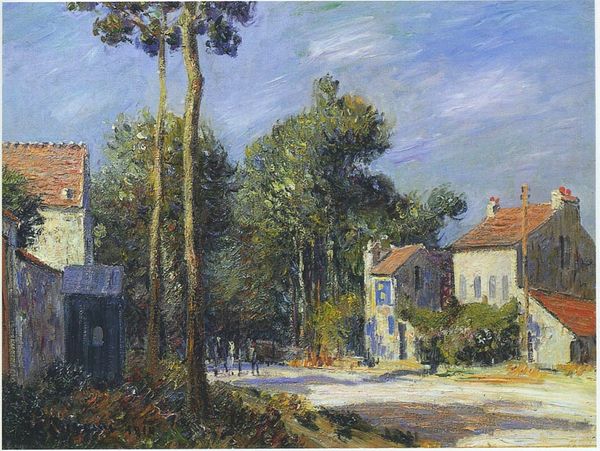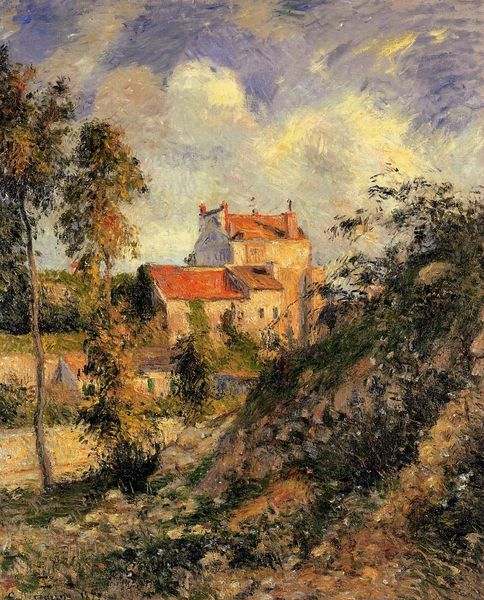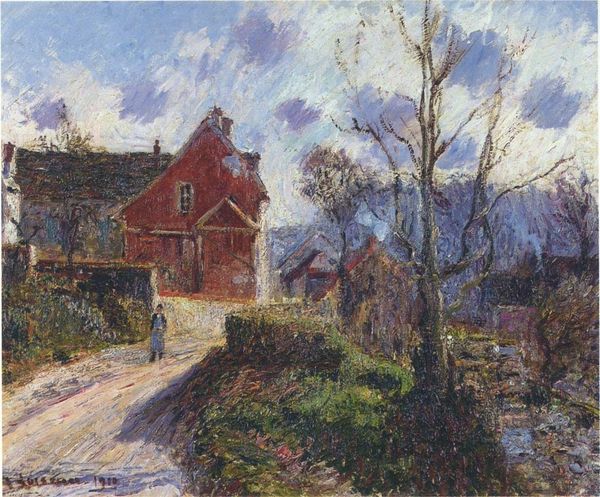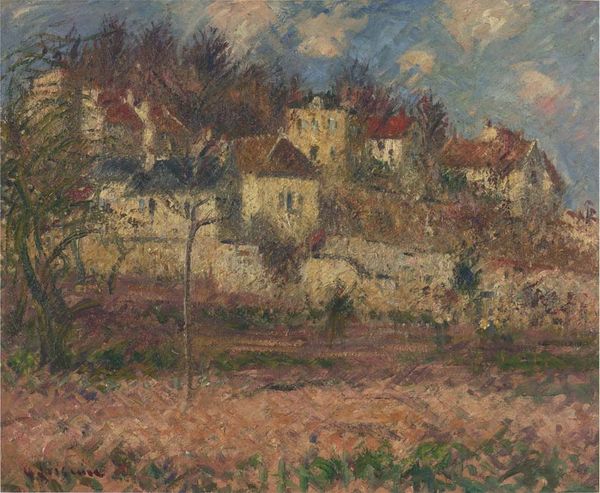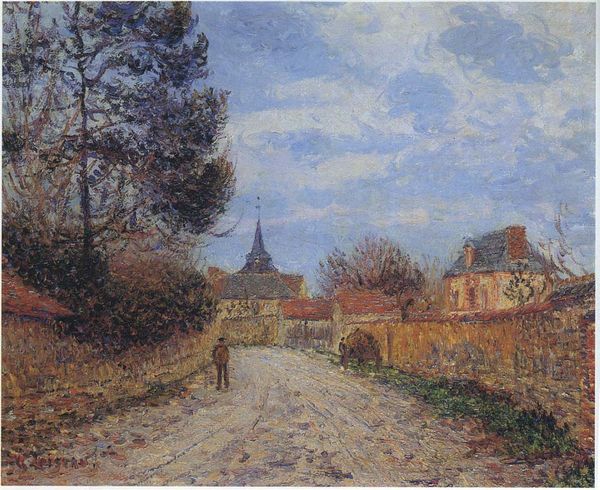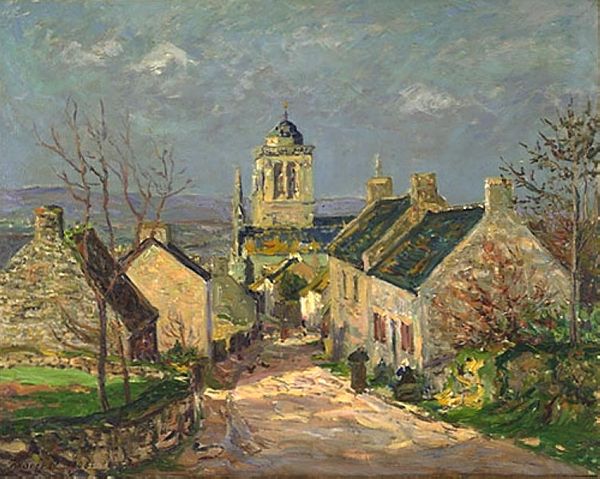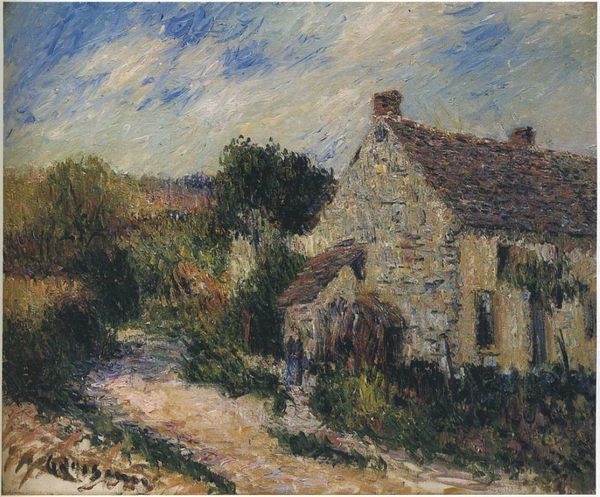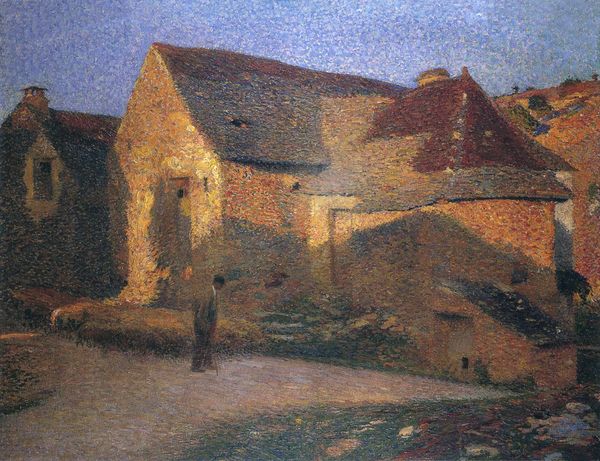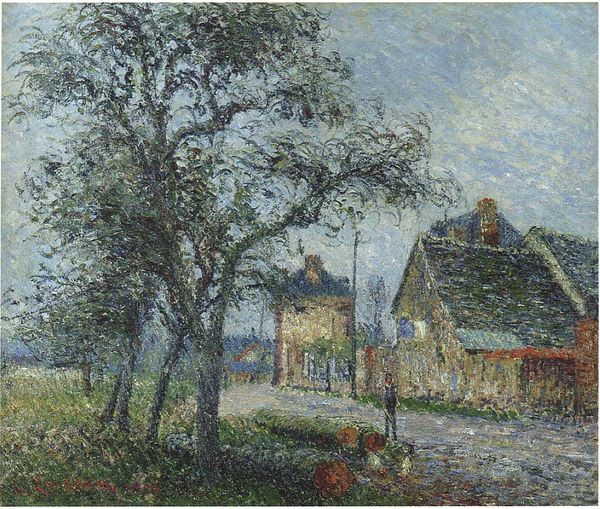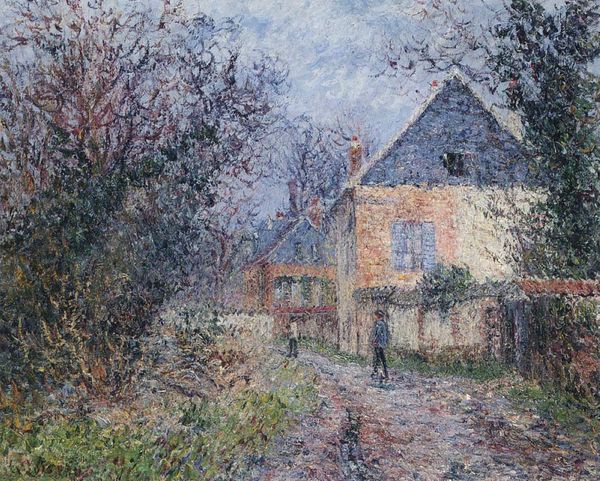
painting, plein-air, oil-paint
#
rural-area
#
painting
#
impressionism
#
plein-air
#
oil-paint
#
landscape
#
house
#
impressionist landscape
#
oil painting
#
cityscape
#
genre-painting
#
building
Copyright: Public domain
Curator: Ah, yes, Loiseau’s "Winter in Chaponival," a lovely example of his impressionistic style, capturing the quiet stillness of a French village. What are your immediate impressions? Editor: Gray. Utterly gray. But a hopeful gray, the kind that hints at sunlight breaking through. It's… melancholy, yet there’s a sense of community huddled within those buildings. You almost feel like you can hear them. Curator: Indeed, Loiseau often worked en plein air, attempting to bottle that fleeting atmospheric moment. It is an oil painting of an ordinary, rural landscape and figures on canvas, elevated through careful observation. His works are about memory as much as light. Do you get that feeling of remembered time from the canvas? Editor: Absolutely. This image, though muted, speaks to the harsh realities of winter for rural communities, and also how social structures offered a refuge. It romanticizes the old idea of communal reliance, whilst also acknowledging its passing. Think about the political implications in art and culture. I feel this embodies that romanticism in the 19th century, reflecting a deep yearning for the old ways in the face of burgeoning industrialisation and city expansion. Curator: A yearning made beautiful, even when tinged with grey. It speaks of those who stayed behind and resisted modernization in search of self sustenance. But how? What can we notice when we consider gender in the portrayal of work and life here? I can't help thinking it must have been the women that offered up care and social connections within that space. Editor: Yes, the impressionists like to blur lines, I agree. These blurred outlines do more than simply portray; they actively resist definition. In their ambiguity, perhaps they symbolize something deeper – the inherent mysteries within seemingly simple existence in community? It’s very dream-like, really, so as we examine art that questions definition and embraces subjectivity, how do we then locate places for ourselves within that? Is it something real? I ask myself and viewers! Curator: That is certainly true for me. In painting, there’s a blurring between seeing and feeling – that it is what can elevate a painting to an emotional space. This piece of land suddenly feels important to its residents. Its grey buildings hold warmth of human connection. Loiseau, I suspect, hoped it was still present within him. Editor: A poignant end note! For me, “Winter in Chaponival” isn’t just an image; it’s an opening, a door to re-examine history, to re-evaluate memory and imagine. It feels vital to stay receptive, questioning the narratives that have always been pushed toward us, even today.
Comments
No comments
Be the first to comment and join the conversation on the ultimate creative platform.
